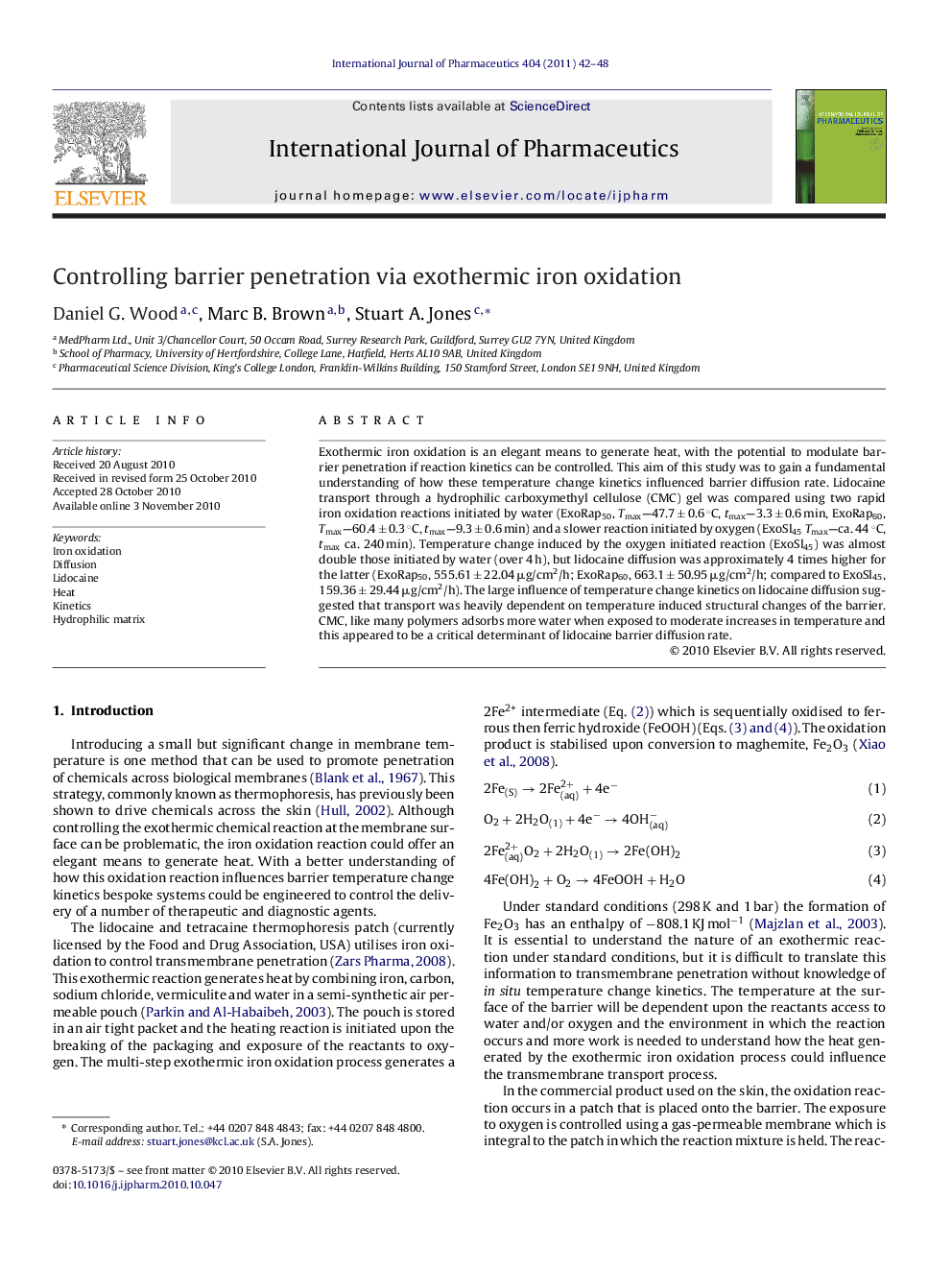| Article ID | Journal | Published Year | Pages | File Type |
|---|---|---|---|---|
| 5821237 | International Journal of Pharmaceutics | 2011 | 7 Pages |
Abstract
Exothermic iron oxidation is an elegant means to generate heat, with the potential to modulate barrier penetration if reaction kinetics can be controlled. This aim of this study was to gain a fundamental understanding of how these temperature change kinetics influenced barrier diffusion rate. Lidocaine transport through a hydrophilic carboxymethyl cellulose (CMC) gel was compared using two rapid iron oxidation reactions initiated by water (ExoRap50, Tmax-47.7 ± 0.6 °C, tmax-3.3 ± 0.6 min, ExoRap60, Tmax-60.4 ± 0.3 °C, tmax-9.3 ± 0.6 min) and a slower reaction initiated by oxygen (ExoSl45Tmax-ca. 44 °C, tmax ca. 240 min). Temperature change induced by the oxygen initiated reaction (ExoSl45) was almost double those initiated by water (over 4 h), but lidocaine diffusion was approximately 4 times higher for the latter (ExoRap50, 555.61 ± 22.04 μg/cm2/h; ExoRap60, 663.1 ± 50.95 μg/cm2/h; compared to ExoSl45, 159.36 ± 29.44 μg/cm2/h). The large influence of temperature change kinetics on lidocaine diffusion suggested that transport was heavily dependent on temperature induced structural changes of the barrier. CMC, like many polymers adsorbs more water when exposed to moderate increases in temperature and this appeared to be a critical determinant of lidocaine barrier diffusion rate.
Related Topics
Health Sciences
Pharmacology, Toxicology and Pharmaceutical Science
Pharmaceutical Science
Authors
Daniel G. Wood, Marc B. Brown, Stuart A. Jones,
